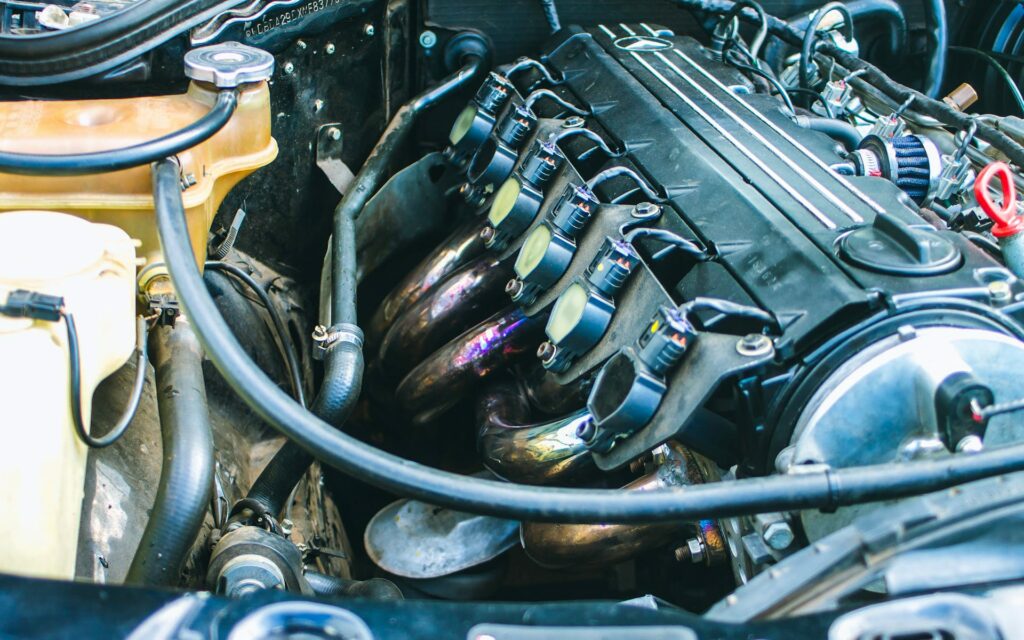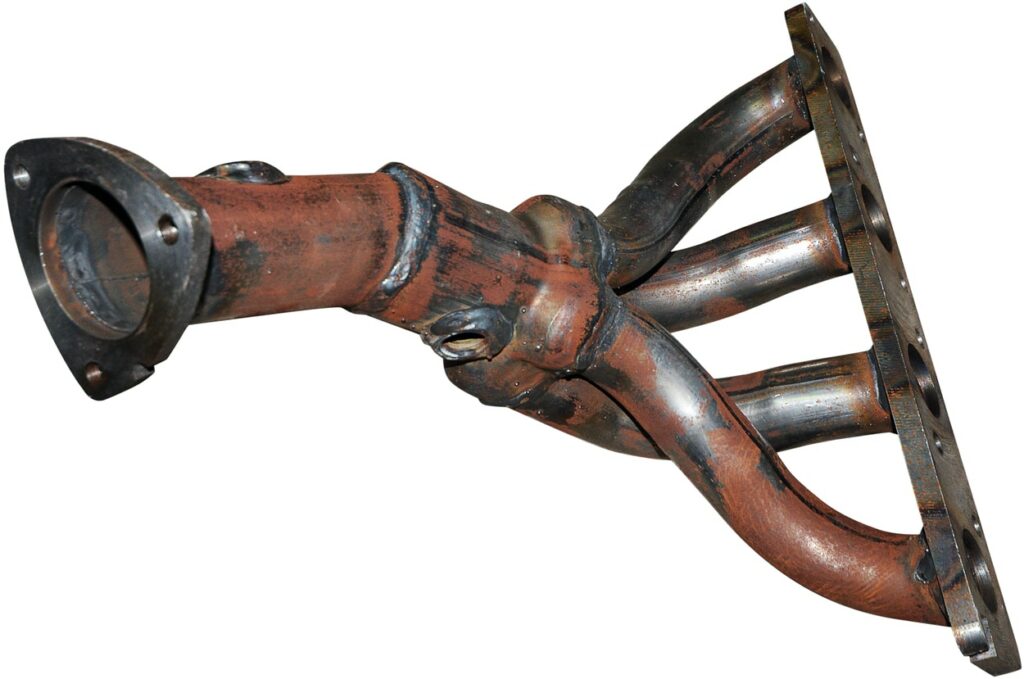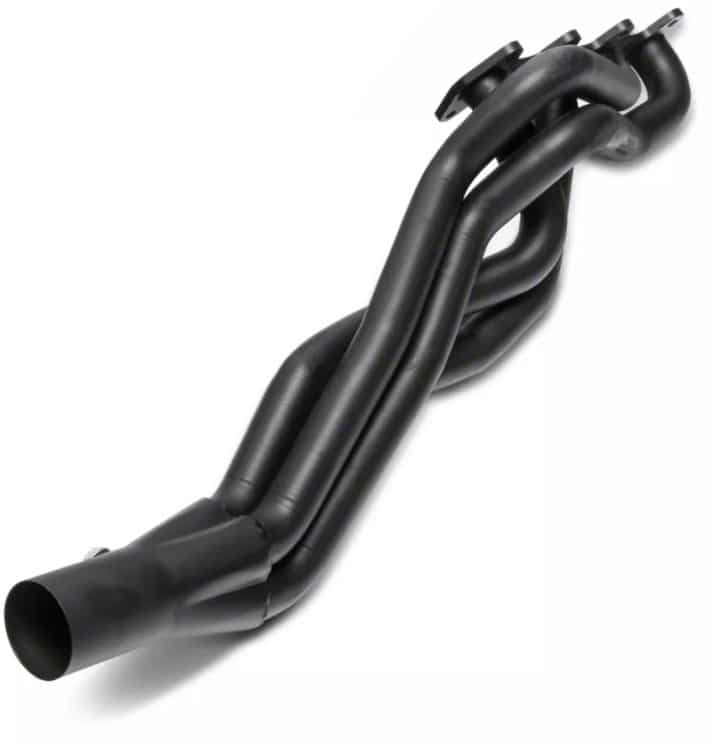Induction, compression, combustion, and exhaust — the never-ending cycle that keeps the heart of all internal combustion engines running.
If this cycle is interrupted, your engine will not work; headers and manifolds come in at the last stage of this cycle. When your engine expels exhaust gases, they are first sent to your manifold, and then to the rest of the exhaust system.
In this guide, we’ll explain how exhaust manifolds and headers differ and which one suits your needs the most.
Exhaust Manifolds and Headers: What’s the Difference?
Exhaust manifolds are often confused with headers because both components serve the same purpose. The word manifold is derived from an Old English word, “manigfeald” which refers to the folding together of multiple inlets and outlets.
Consider that an eight-cylinder engine has eight outlets –– one for each cylinder. In order to collect the exhaust gas from all eight cylinders into one single pipe, we need an exhaust manifold.
Its sole purpose is to transfer the exhaust gases from the engine to the rest of your exhaust system, where they can be expelled.

Even though both perform the same function, there are a few key differences between manifolds and headers.
The main difference lies in the way they sound and perform. Which one you end up choosing depends on what you plan on doing with your car.
Manifolds
An exhaust manifold is made from cast iron which makes it capable of withstanding high heat and pressure from exhaust gases. The only problem with cast iron is that it is prone to cracking.
Most cars have manifolds installed from factory. They’re thicker, sturdier, and more durable. However, the downside of having thick walls is that they leave little space for exhaust gasses to pass through.
The iron casting also makes the interior rough, which can result in the flow of exhaust gases slowing down. Because the gas flow slows down, a manifold can cause backpressure, and that prevents the exhaust from efficient clearing.
This could ultimately result in a loss in horsepower and efficiency to allow fresh air in.

Pros
- Absorbs heat
- Reduces emissions
- Retains most of the noise
- Fairly inexpensive
Cons
- Less space for gases to pass
- Thicker walls reduce efficiency and performance
Headers
Headers are a popular aftermarket part, and they are constructed using stainless steel tubes for each cylinder which makes it highly effective for gases to exit.
The tubes on a header connect to a collector pipe, which is equal in length and smooth. This ensures that the gases reach the collector separately from each cylinder along with the right exhaust scavenging characteristics.
Just make sure that your collector pipes are not constricted because that defeats their purpose. If you connect everything properly, don’t be surprised to see a noticeable improvement in performance.

A common issue you’ll experience with headers is that their thin walls don’t absorb the noise as well as manifolds do. This is perfect if your intention is to increase the engine sound altogether.
You’ll find headers in chrome, painted, ceramic coated and uncoated. Uncoated or poorly finished headers will rust over time. Ceramic coated ones, on the other hand, are less prone to rust and corrosion.
Pros
- Eliminates the manifold’s back pressure
- Improves performance
- Great for turbos
- Improves high revving
Cons
- Absorbs less sound
- Compromised if collector pipe is restricted
Types of Headers
Headers have a significant impact on your car’s performance so you need to make sure to get the right one.
There are some different ways that headers can be made. If we take a 4 cylinder header as an example, these can reduce exhaust pipes down from 4-2-1, or simply 4-1.
Another common way in which that can differ is in their length…
Shorty Headers
These headers perform their best in the idle to mid rpm range — perfect if you want your daily driver to get a boost in performance.

Another choice to consider is equal or unequal length headers. Where equal length headers provide consistently great performance, unequal ones provide a deeper rumbling sound and more low-end torque.
Shorty headers are great for turbos but are not as rev-happy as long tube headers.
Long Tube Headers
Long tube headers build a lot of power in the mid to high rpm range. It varies from car to car, but generally they replace your OEM exhaust manifold, a downpipe and catalytic converter.

They’re the ideal choice for track cars and if you love the aggressive sound they bring with them. The only tricky part with long tube headers is that they’re challenging to install. If your car comes from the factory with a catalytic converter, installing long tube headers will often result in a check engine light.
Exhaust Manifold vs Headers: Sound
Aside from performance, what really sets headers and exhaust manifolds apart is their sound.
Since manifolds are thicker when it comes to absorbing pressure, they also absorb most of the sound from the exhaust.
But if you like to step on the gas and hear your engine scream, then you’re going to love what headers have to offer. Thanks to their tubes, collector pipes, and thin walls, headers are bound to turn heads as you cruise down the street.
Look at the difference in the sound of the two like this — a manifold will suit a daily driver perfectly and a header is a great match for a performance machine.
Why Headers Outshine Exhaust Manifolds: Performance and More
Ultimately, your choice will come down to how you want your car to perform and sound.
If you want something that sounds OEM, then manifolds are the way to go, especially for your daily driver. They’re easy to install, can absorb high temperatures, and are fairly inexpensive.
Just remember that the thick walls have limited space for the gases to pass through which will affect your performance.
However, if you’re not prepared to compromise on performance, then headers are your best bet. Your exhaust may get a little louder with headers on board but most car enthusiasts seem to love the aggressive sound.
Once you settle for headers, you might want to check out long tube headers if you want a significant performance boost. Shorty headers, on the other hand, are great for turbocharged cars.
What’s your opinion on exhaust manifolds and headers? Let us know in the comments below.


1 comment
I keep hearing people not only in Australia but all over the world using different names for exhaust outlets. I was taught, is inlet (carbies) fuel in, is MANIFOLD.
Exhaust, usually car manufacturers make and fit HEADERS, cast iron or alloy cheap to manufacture but not very efficient.
More efficient is extractors, made from steel or stainless steel which can be tuned for better performance.
Just a little pet hate of mine, headers / extractors.